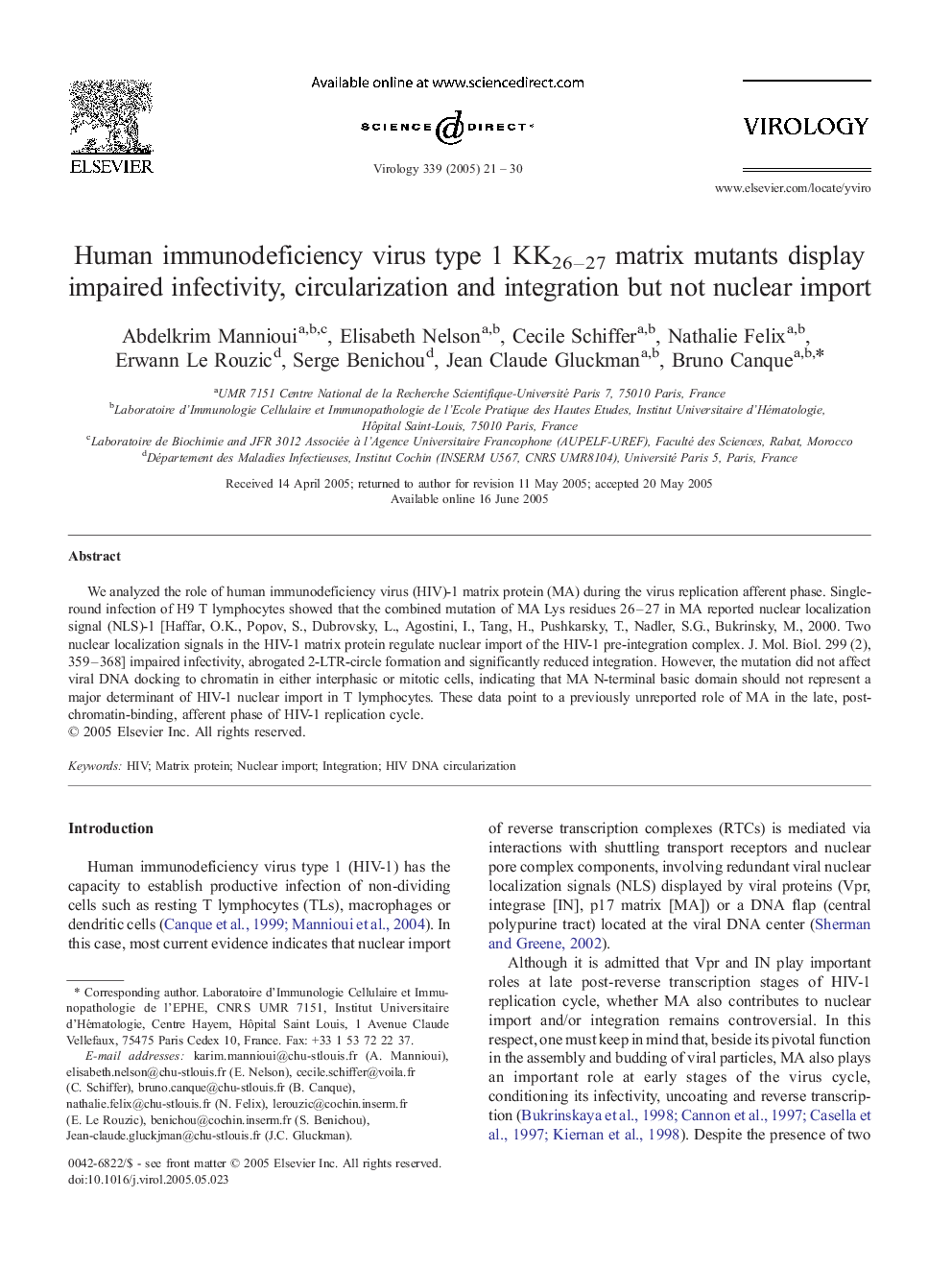| Article ID | Journal | Published Year | Pages | File Type |
|---|---|---|---|---|
| 9286832 | Virology | 2005 | 10 Pages |
Abstract
We analyzed the role of human immunodeficiency virus (HIV)-1 matrix protein (MA) during the virus replication afferent phase. Single-round infection of H9 T lymphocytes showed that the combined mutation of MA Lys residues 26-27 in MA reported nuclear localization signal (NLS)-1 [Haffar, O.K., Popov, S., Dubrovsky, L., Agostini, I., Tang, H., Pushkarsky, T., Nadler, S.G., Bukrinsky, M., 2000. Two nuclear localization signals in the HIV-1 matrix protein regulate nuclear import of the HIV-1 pre-integration complex. J. Mol. Biol. 299 (2): 359-368] impaired infectivity, abrogated 2-LTR-circle formation and significantly reduced integration. However, the mutation did not affect viral DNA docking to chromatin in either interphasic or mitotic cells, indicating that MA N-terminal basic domain should not represent a major determinant of HIV-1 nuclear import in T lymphocytes. These data point to a previously unreported role of MA in the late, post-chromatin-binding, afferent phase of HIV-1 replication cycle.
Related Topics
Life Sciences
Immunology and Microbiology
Virology
Authors
Abdelkrim Mannioui, Elisabeth Nelson, Cecile Schiffer, Nathalie Felix, Erwann Le Rouzic, Serge Benichou, Jean Claude Gluckman, Bruno Canque,
